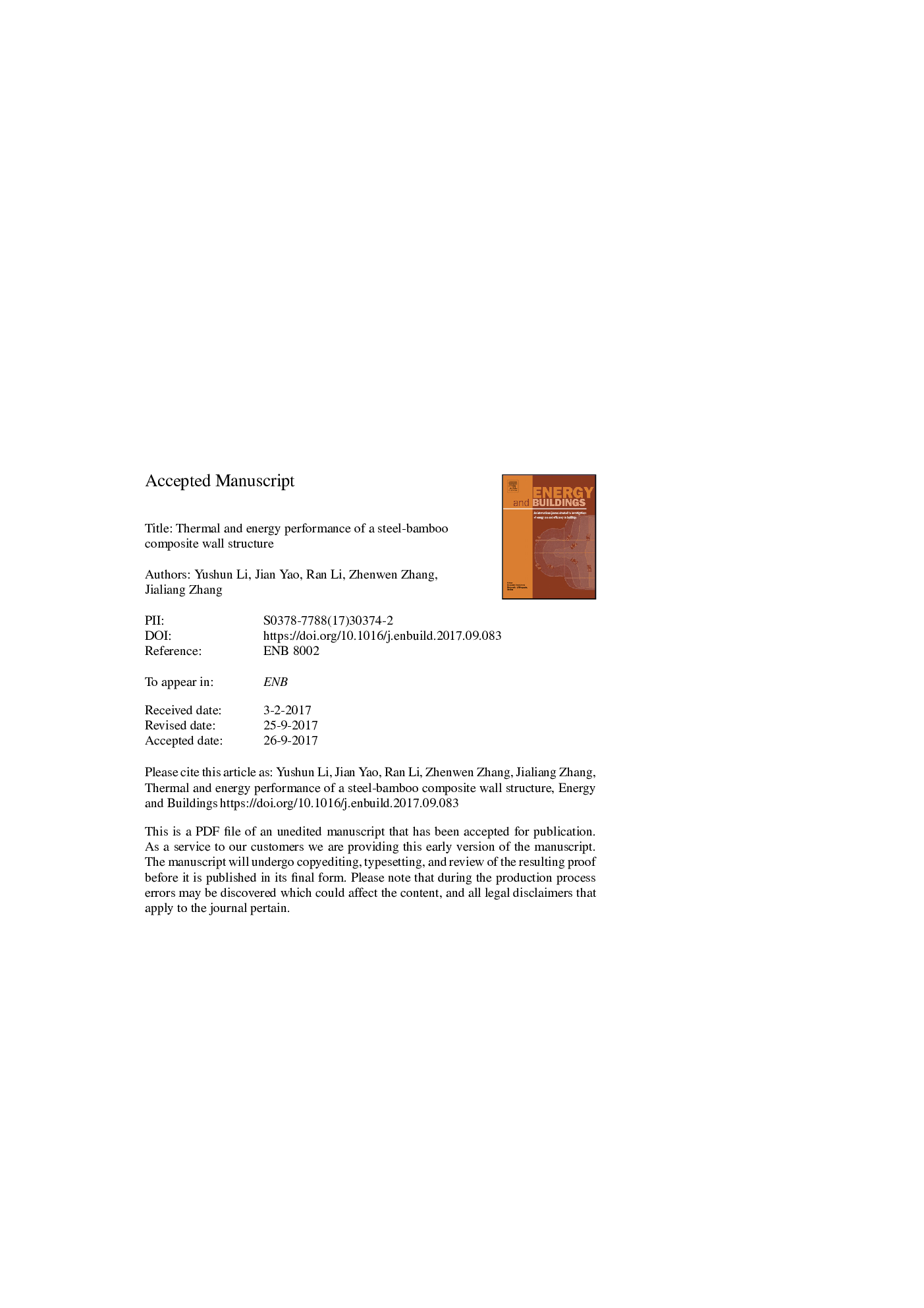| Article ID | Journal | Published Year | Pages | File Type |
|---|---|---|---|---|
| 4918817 | Energy and Buildings | 2017 | 40 Pages |
Abstract
Heat transfer through external walls plays a significant role in building energy saving. This paper tries to investigate the thermal and energy performance of a novel lightweight steel-bamboo wall structure. A testing residential building was constructed using the prefabricated steel-bamboo composite wall and field measurement was carried out to determine the heat transfer coefficient, time lag and decrement factor of the steel-bamboo wall. Numerical simulation was conducted in order to further evaluate its performance improvement compared to two commonly used wall structures in this climate region. The results show that the steel-bamboo wall has a high thermal performance with an improvement of U value by up to 26.1%-48.4%, indicating a lower heating demand compared to common wall structures in winter. Meanwhile, it has a high resistance to outdoor air temperature fluctuation with a low decrement factor of 0.022. The relatively low time lag (2Â h) contributes to a lower indoor temperature during summer nighttime and thus reduces cooling energy demand. The improvement of total energy performance reaches 27.1%-40.9%, indicating a great potential of applications of this steel-bamboo wall in residential buildings in hot summer and cold winter zone. However, the main drawback of the steel-bamboo structure is that its indoor thermal performance during the hottest hours in summer is poorer than conventional walls.
Related Topics
Physical Sciences and Engineering
Energy
Renewable Energy, Sustainability and the Environment
Authors
Yushun Li, Jian Yao, Ran Li, Zhenwen Zhang, Jialiang Zhang,
